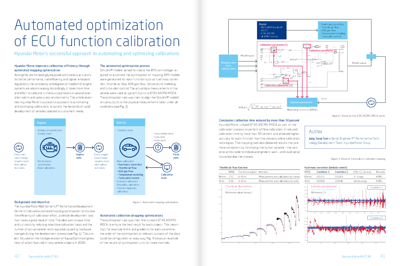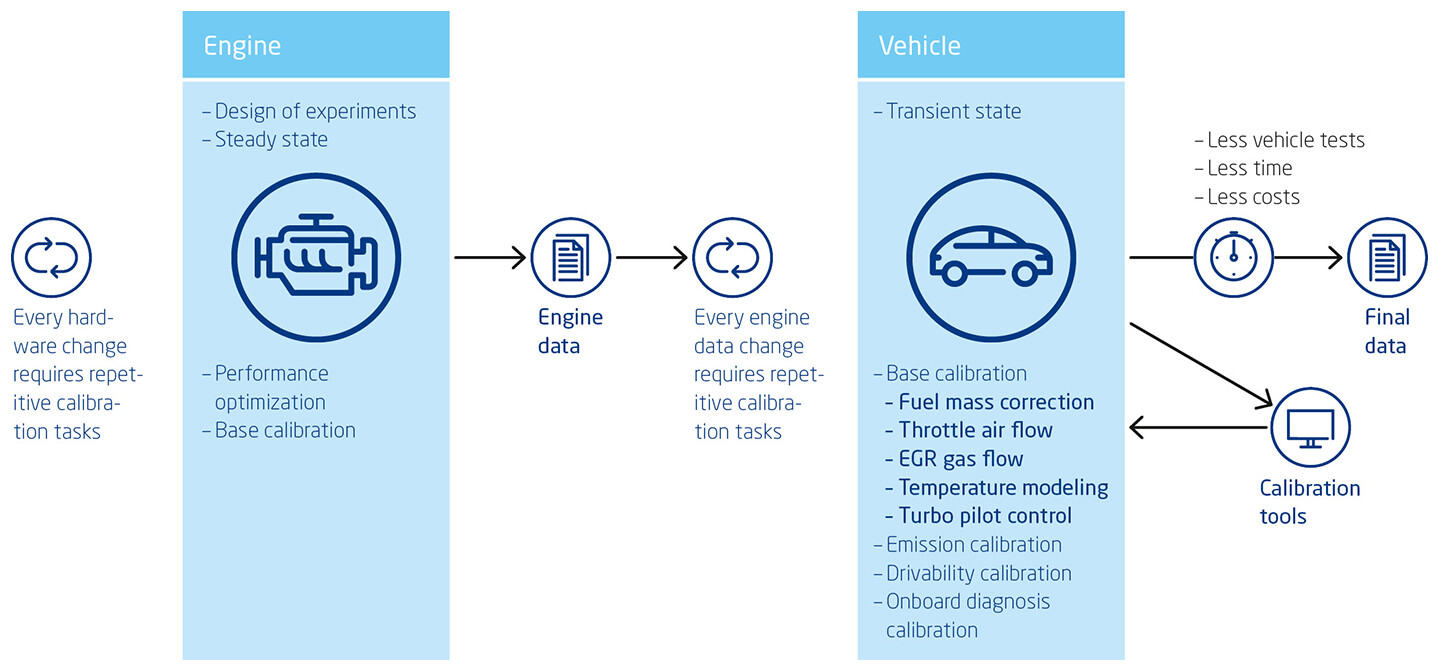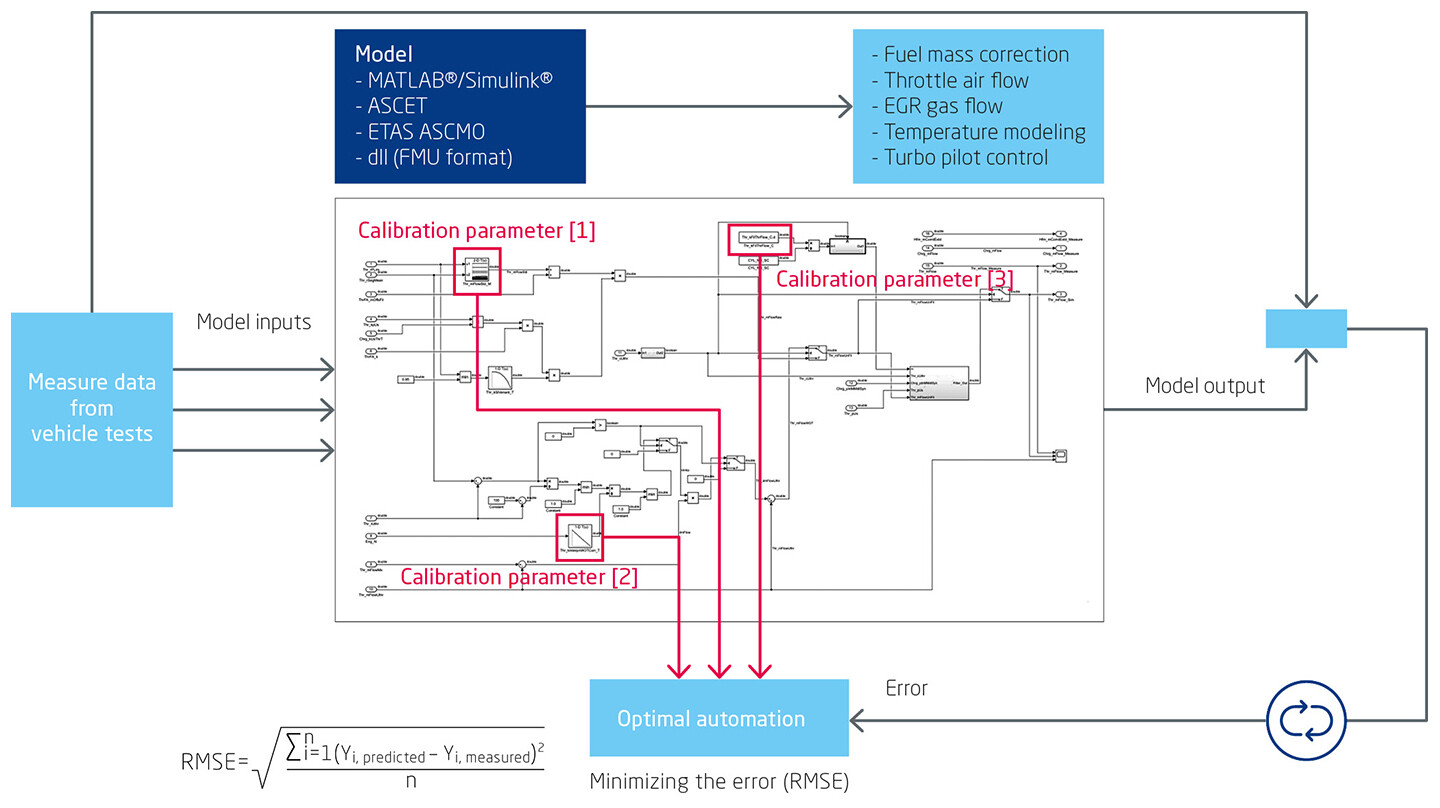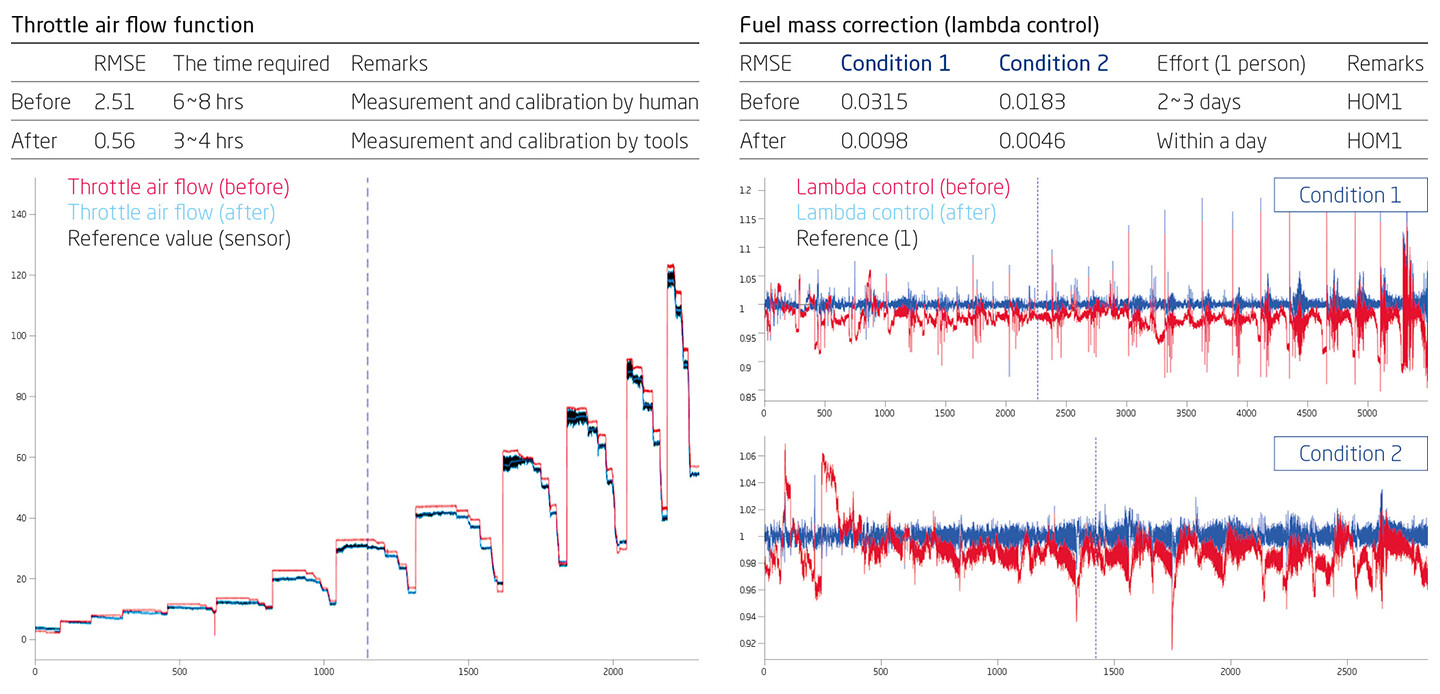Automated optimization of ECU function calibration
Hyundai Motor’s successful approach to automating and optimizing calibrations
Hyundai Motor improves calibration efficiency through automated mapping optimization
As engines are increasingly equipped with various actuators for better performance, fuel efficiency, and tighter emissions regulations, the complexity and degrees of freedom of engine systems are also increasing. Accordingly, it takes more time and effort to calibrate numerous parameters in several operation points and various test environments. This article examines Hyundai Motor’s successful approach to automating and optimizing calibrations to satisfy the demands of rapid development of vehicles tailored to customers’ needs.
Background and objective
The Hyundai Motor R&D Center’s PT Performance Development Center introduced automated mapping optimization to improve the efficiency of calibration effort, a vehicle development task that takes a great deal of time. The idea was to save time and cut costs by reducing repetitive calibration tasks and the number of actual vehicle tests required caused by hardware changes during the development process (see Fig. 1). This project focused on the third generation of Kappa/Gamma engines, most of which featured in new vehicle projects in 2020.
The automated optimization process
Simulink® models served to create the EMS control logic required to automate the optimization of mapping. EMS models were generated for each function such as fuel mass correction, throttle air flow, EGR gas flow, temperature modeling, and turbo pilot control. The actual data measurements in the vehicle were used as system inputs to ETAS ASCMO-MOCA. The optimization task was then to align the Simulink® models’ virtual outputs to the physical measurements taken under all conditions (see Fig. 2).
Automated calibration (mapping optimization)
The optimization task was then fine-tuned in ETAS ASCMO-MOCA to ensure the best result for each project. This meant that, for example, limits and gradients for each parameter, the order of the optimization, or relevant subsets of the data could be configured in an easy way. Fig. 3 shows an example of the results of optimization runs for three channels.
Conclusion: calibration time reduced by more than 50 percent
Hyundai Motor utilized ETAS ASCMO-MOCA as part of the calibration process to perform offline calibration. It reduced calibration time by more than 50 percent and achieved higher accuracy for each function than the previous online calibration techniques. This mapping tool also delivered results that are more consistent by minimizing the human variable – the variance attributable to individual engineers’ work – and could serve to standardize the process.
Author
Jung Seop Son is Senior Engineer PT Performance Technology Development Team, Hyundai Motor Group.
Further information
-
 Automated optimization of ECU function calibration Download
Automated optimization of ECU function calibration Download


